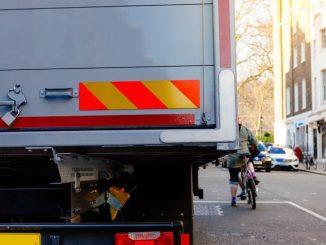
A driver’s ‘direct vision’ alone is not enough to prevent collisions caused by blind spots and vehicle safety systems need to be fitted as well if fatalities are to be reduced, according to Brigade Electronics.
It said active systems that require a driver to take immediate action through the provision of audible alerts and warning sounds are crucial to driving up safety standards.
Brigade cited research that showed 25% of road deaths in the EU involve a lorry and that HGVs are involved in more than 80% of vulnerable road user fatalities in London, despite making up only 4% of traffic.
It said driver visibility and what they are able to see from the cab seat was key, but it was limited by factors such as dirty windows, sun glare, cab height and vehicle length.
Emily Hardy, marketing manager at Brigade Electronics UK, said: “While passive systems, such as mirrors, have been a legal requirement for many years, mirrors alone will not solve the blind spot problem.
“If the driver is not looking, they will not see that something is in the immediate vicinity of their vehicle.
“Preventing deaths and injuries, as well as damage to objects and vehicles, can be reduced dramatically when a driver’s indirect vision from the cab is improved.
“We always recommend a combination of passive and active vehicle safety systems to be installed for ultimate safety.”
Hardy’s comments came after Transport for London (TfL) confirmed it would press ahead with enforcement of the Direct Vision Standard from 1 March 2021, despite industry calls for a delay.
TfL recently told operators to follow Whistl’s lead after the delivery firm amended its London fleet to include in-cab monitoring, blind spot sensors, reverse cameras and offside cameras.
Gareth Hughes, Whistl procurement, property and fleet director, said: “Our investment now will enable us to be compliant early with the new legislation and ensures that we are doing everything we can to ensure the safety of our drivers alongside cyclists and pedestrians with whom we share the roads in London.”













